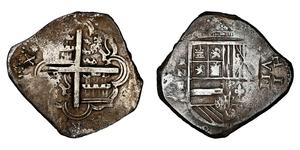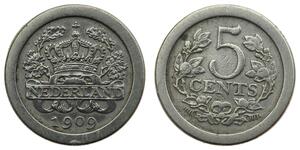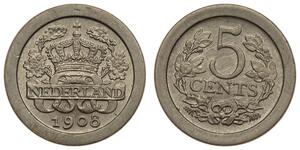[ 4583] Byzantine Emperor: JOHN II, Comnenus - Reigned: 15 August 1118 - 8 April 1143 Bronze Half Tetarteron (17mm, 1.94 gm.) Thessalonica mint: 1118-1143 A.D. Reference: Sear 1955. ΔΙ / ΜΙ—T / RI / O / C, facing bust of St. Demetrius, wearing numbus and military attire, holding sword and shield + IW ΔЄСΠΟΤ - Bust of John II facing wearing crown and jeweled chlamys, and holding labarum and globe cross. Provided with certificate of authenticity. CERTIFIED AUTHENTIC by Sergey Nechayev, PhD - Numismatic Expert John II Komnenos (or Comnenus) (Greek: Ίωάννης Β΄ Κομνηνός, Iōannēs II Komnēnos) (September 13, 1087 – April 8, 1143) was Byzantine emperor from 1118 to 1143. Also known as Kaloïōannēs ("John theBeautiful"), he was the eldest son of emperor Alexios I Komnenos and Irene Doukaina. The second emperor of the Komnenian restoration of the Byzantine Empire, John was a pious and dedicated emperor who was determined to undo the damage his empire had suffered at the battle of Manzikert, half a century earlier. In the course of his twenty-five year reign, John made alliances with the Holy Roman Empire in the west, decisively defeated the Pechenegs in the Balkans, and personally led numerous campaigns against the Turks in Asia Minor. John's campaigns fundamentally changed the balance of power in the east, forcing the Turks onto the defensive and restoring to the Byzantines many towns, fortresses and cities right across the peninsula. In the southeast, John extended Byzantine control from the Maeander in the west all the way to Cilicia and Tarsus in the east. In an effort to demonstrate the Byzantine emperor's role as the leader of theChristian world, John marched into the Holy Land at the head of the combined forces of Byzantium and the Crusader states; yet despite the great vigour with which he pressed the campaign, John's hopes were disappointed by the treachery of his Crusader allies, who deliberately failed to fight against the Muslim enemy at the crucial moment. Also under John, the empire's population recovered to about 10 million people. The Latin historian William of Tyre described John as short and unusually ugly, with eyes, hair and complexion so dark he was known as 'the Moor'. Yet despite his physical appearance, John was known as Kaloïōannēs, "John the Handsome" or "John the Beautiful". The epithet referred not to his body but to his soul. Both his parents had been unusually pious and John surpassed them. Members of his court were expected to restrict their conversation to serious subjects only. The food served at the emperor's table was very frugal and John lectured courtiers who lived in excessive luxury. Despite his austerity, John was loved. His principles were sincerely held and his integrity great. John was famed for his piety and his remarkably mild and just reign. He is an exceptional example of a moral ruler, at a time when cruelty was the norm. He never condemned anyone to death or mutilation. Charity was dispensed lavishly. For this reason, he has been called the Byzantine Marcus Aurelius. By the personal purity and piety of his character he effected a notable improvement in the manners of his age. Gifted with great self control and personal courage, John was an excellent strategist and an expert imperator in the field, and through his many campaigns he devoted himself to the preservation of his empire. Succession He succeeded his father in 1118, but had already been proclaimed co-emperor by Alexios I on September 1, 1092. Niketas Choniates alone tells of the actions by which John II secured his own succession. Alexios I had favoured John to succeed him over his wife Irene's favourite, the Caesar Nikephoros Bryennios, who was married to their daughter Anna Komnena. Alexios resorted to dissimulation in order to avert Irene's criticism of his choice and her demands that Nikephoros should succeed. As Alexios lay on his deathbed in the monastery of the Man ...
Mehr...

|
Beigetragen von:
anonymous 2015-08-18 |
Similar Coin Groups

8 Real Spanien / Spanish Colonies Silber ...
Diese Gruppe hat 16 Münzen / 14 Preise
Add coin to this group

1 Escudo Habsburgermonarchie (1526-1804) ...
Diese Gruppe hat 8 Münzen / 6 Preise
Add coin to this group
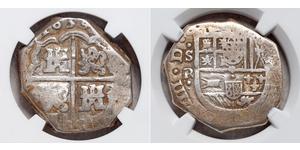
4 Real Spanien Silber Philip IV. von Spa ...
Diese Gruppe hat 6 Münzen / 4 Preise
Add coin to this group

1 Histamenon Byzantinisches Reich (330-1 ...
Diese Gruppe hat 11 Münzen / 7 Preise
Add coin to this group
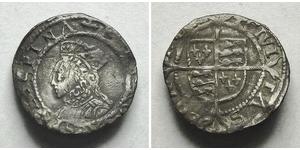
1 Penny Königreich England (927-1649,166 ...
Diese Gruppe hat 6 Münzen / 4 Preise
Add coin to this group
2025-05-25
- New coin is added to 5 Cent Niederlande
5 Cent Niederlande
Diese Gruppe hat 11 Münzen / 8 Preise
⇑
Netherlands - 5 Cents 1908 - Wilhelmina
2025-05-27
- Historical Coin Prices
Das könnte Sie auch interessieren:








